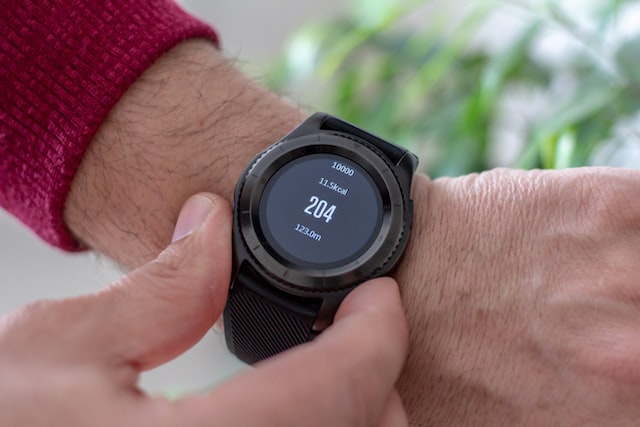Have you ever taken the time to consider how much physical activity you put in throughout the course of a typical day? Many of us are living busy lives, rushing from one place to another and making sure that we keep our bodies moving on a consistent basis. Since the beginning of the epidemic, fitness groups all over the globe have placed a focus on the need of making exercise a priority in our daily routines in order to keep ourselves healthy.
This is particularly important to keep in mind at a time when the closure of gyms and studios due to the epidemic has made it more difficult to exercise. There are many helpful tools available to us that may assist us in staying on track with our goals of lowering our weight and increasing our calorie burn.
It is not a secret that walking is one of the best and easiest means of working out. Walking is also one of the most frequent measures of fitness monitoring for individuals of all ages and activity levels. Counting steps is also one of the most common measurements of fitness tracking. Even though the majority of mobile devices and wearables, such as smartwatches, come equipped with a step-counting capability, many individuals still choose to wear pedometers during their exercises since it provides a more precise method of tracking their step count.
WHAT DO YOU MEAN BY A PEDOMETER?

It’s possible that the word ‘pedometer’ will make more sense to you, but that will depend on who is reading this. People used to mostly rely on pedometers, also known as step counters, as their main fitness trackers when they were working out. This was back in the days before step-counting technology was a regular feature of smartphones and smartwatches.
Traditional pedometers have the appearance of a regular digital watch and have the only function of counting the number of steps that are taken over a certain amount of time. While some pedometers are more complicated than others and come with additional capabilities that may give additional data, others merely measure the number of steps that are taken during an exercise session.
Measurements of the user’s heart rate, the total amount of calories expended, and the total number of hours spent standing are some of the capabilities that current pedometers are able to provide. These several metrics serve to provide a more complete picture of an individual’s total activity level. Finding the proper pedometer for your needs is a wonderful method to remain on top of your health and achieve your fitness goals, whether they be to lose weight or to build muscular strength.
TECHNOLOGY BEHIND A PEDOMETER
The question now is, how exactly do pedometers function? Depending on the device, the technology that is used in pedometers is rather straightforward. Naturally, more advanced models of pedometers will have more complicated technology, which will make the concept somewhat more difficult to depict. Pedometers count the number of steps taken by the wearer by measuring the amount of vibration caused by the movement of the wearer’s foot. The magnetic pendulum of a traditional pedometer swing back and forth in response to the movement of the person wearing the device to measure their steps.
There are pedometers designed to be worn around the wrist, but another way to ensure that it is counting your steps correctly is to wear it around your waist. Pedometers generally have an accuracy of plus or minus 10% when measuring the number of steps walked and plus or minus 30% when calculating the number of calories expended. Despite the fact that the margin of error seems to be rather large, they continue to be a good tool to keep track of your total activities.
HOW DOES A PEDOMETER HELP PEOPLE REACH THEIR FITNESS GOALS?

There is an abundance of value in carrying a pedometer or fitness tracker with you at all times. People of all ages and levels of exercise may benefit from keeping track of their health and fitness with the help of pedometers in a big manner. Those individuals who are carefully recording their exercises with the intention of either decreasing their body weight or boosting their muscular strength may benefit from wearing one even more than others.
When we have an idea of the total amount of movement that occurs over the course of a day, it not only shows us whether or not we’ve gotten a good workout but also makes us aware of the adjustments that we can make to our daily lives in order to either increase or maintain the level of activity that is required.
Tracking to Achieve Particular Health and Fitness Objectives
The majority of us have been there before: we are beginning a new fitness regimen with a great deal of drive to achieve our objectives. Tracking our progress is one of the most effective and durable strategies to ensure that we are, in fact, making progress toward achieving our objectives.
Pedometers are helpful because they allow us to measure steps and keep track of other information; but, they also provide a vital picture of our development through time. For instance, a wristwatch that monitors cardiac activity will be able to detect a decrease in the user’s resting heart rate as a direct consequence of the wearer’s increased level of continuous activity. This is a very important sign that your workout regimen is working for you!
Altering Our Habits In Order To Improve Our Health
Did you know that those who walk 12,000 steps per day as opposed to 4,000 steps per day have a risk of significant health problems that is 65% lower? This is a big signal of the extraordinary advantages that step counting has on the length of our lives and how much longer we may expect to live as a result of doing it.
We understand that working in an office significantly reduces a person’s ability to achieve the recommended amount of steps in a day, but even the smallest adjustments may make a big impact! Take the stairs instead of the elevator, increase the number of times you visit the water fountain while still ensuring that you drink enough water, and be sure to take breaks to walk about and stretch your legs. It’s all about evolution, not revolution when it comes to improving your health; little improvements like these will help you notice a difference in the big picture.

